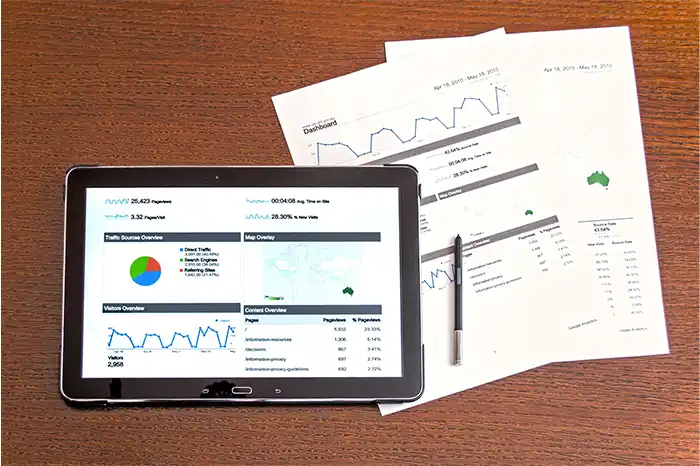Test management reporting is a process that plays a central role in software development. It helps teams to keep track of testing activities and results, guaranteeing the quality and reliability of software products. At its core, test management reporting is about organizing testing details and presenting them in a way that stakeholders can easily understand. This involves summarizing objectives, activities, and results to show how well a product meets its quality requirements. Stakeholders use these reports to make informed decisions about a product’s release readiness.
You can use various test automation tools to streamline the reporting process. These tools help execute tests efficiently and generate detailed reports. Functionize’s list of frequently used test automation tools offers insights into different tools that are available, helping you choose the right ones for your project’s needs.
High-quality test reports not only summarize which tests were performed but also detail the testing environment and any issues encountered. By closely monitoring these reports, you can gain valuable insights into the current status of your software projects, helping promote continuous improvement and timely delivery.
Fundamentals of Test Management Reporting

Test management reporting is important for tracking and communicating test progress, results, and quality. Understanding key components and metrics is important for effective test management.
Purpose of Test Management Reporting
The main purpose of test management reporting is to provide a clear view of the testing process. Reports help track progress, identify issues, and make informed decisions. They serve as a communication tool among team members and stakeholders, guaranteeing everyone is aligned with project goals.
Another important function is to highlight any test failures or defects. This information allows teams to address issues promptly, improving the quality of the software before release. By keeping everyone informed, the test management process becomes more organized and efficient.
Key Components of a Test Report
A test report contains specific elements to guarantee clarity and effective communication.
- Summary: A brief overview of what was tested and the outcomes.
- Objectives: Clear goals of the testing process.
- Activities: Detailed description of tests conducted, including the environment and configurations used.
- Results: Pass/fail outcomes with evidence like screenshots or logs.
- Issues: Any bugs or defects discovered during testing, along with their status and priority.
By organizing the test report in this way, you can guarantee that all necessary information is easily accessible and understandable by all stakeholders involved in the project.
The Role of Test Metrics
Test metrics offer measurable data that helps evaluate the effectiveness of the testing process. Common metrics include test case execution, defect density, and test coverage. These metrics allow you to assess how well testing is going and identify areas for improvement.
Using metrics provides insights into the efficiency of test practices. For instance, a high number of failed test cases may indicate the need for better requirements analysis or code quality. Test metrics help in making informed decisions to optimize the testing process, guaranteeing that software meets its quality standards.
Implementing Effective Reporting Strategies

Effective reporting strategies in test management are necessary for clear communication, tailored insights, and ongoing accuracy. This involves selecting suitable tools, customizing reports to suit different audiences, and following best practices for continuous reporting.
Choosing the Right Reporting Tools
Selecting the best tools for test reporting is a necessary step. The right tool should help you present data in a way that’s easy to understand and useful. Look for features like customizable dashboards, real-time updates, and user-friendly interfaces.
Make sure the tools you choose can integrate with other systems you use. This could include software testing tools or project management platforms. Integration can streamline your workflow and make reporting smoother.
It’s also important that your tools support the types of reports you need. Whether you need summary reports, detailed reports, or graphical visualizations, your tools should be able to deliver these effectively.
Customizing Reports for Different Audiences
Different audiences require different reports. Customize your reports to provide the right level of detail and focus. For managers, highlight key metrics and trends. They often want high-level summaries.
Technical teams might need more detailed data. This could include specifics about test cases, errors, and resolutions. Tailor the content and format to the audience’s needs and preferences.
Using visuals can help make complex data more digestible. Graphs and charts can quickly communicate important insights. Clearly label any visuals to guarantee clarity and understanding.
Best Practices for Ongoing Reporting
To maintain effective reporting over time, adhere to best practices. Regularly update reports with the most current data. This keeps everyone informed and helps in quick decision-making.
Keep your reporting as clear and concise as possible. Avoid unnecessary jargon that might confuse readers. Consistent formatting helps maintain clarity and ensures reports are easy to read.
Encourage feedback from report users. Their insights can help you improve the content and presentation of your reports. By staying flexible and responsive, you ensure your reports remain useful and relevant over time.
Read More: It support jobs
Conclusion
To wrap it up, a good test management report gives clear insights into testing efforts and results. It helps you keep track of what has been tested and what still needs attention. This keeps your team aligned and informed. Key takeaways include knowing the scope of testing, recording environment details, and summarizing results
Tracking any lessons learned can also provide continuous improvement. By focusing on these elements, your reports can be both informative and useful.





